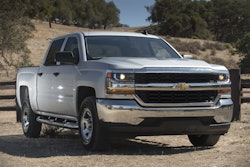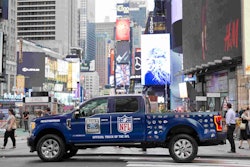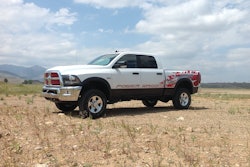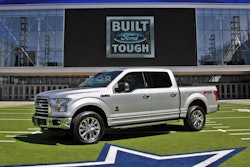 General Motors and the U.S. Army Tank Automotive Research, Development and Engineering Center (TARDEC) will soon reveal a Chevrolet Colorado-based fuel cell electric vehicle.
General Motors and the U.S. Army Tank Automotive Research, Development and Engineering Center (TARDEC) will soon reveal a Chevrolet Colorado-based fuel cell electric vehicle.Detroit and the U.S. military have a long history of working together and that relationship continues as GM and the U.S. Army team-up to reveal in October a fuel cell electric vehicle based on the Chevrolet Colorado.
GM and the U.S. Army Tank Automotive Research, Development and Engineering Center (TARDEC) will debut the hi-tech, alt fuel vehicle at the fall meeting of the Association of the United States Army (AUSA) in Washington, D.C.
”Hydrogen fuel cells as a power source have the potential to bring to the force incredibly valuable capabilities,” said TARDEC Director Paul Rogers. “We expect the vehicle to be quiet in operation and ready to provide electricity generation for needs away from the vehicle. With fuel cell technology advancing, it’s an ideal time to investigate its viability in extreme military-use conditions.
“Fuel cell propulsion has low-end torque capability that is useful in an off-road environment. It also offers additional characteristics attractive to both commercial and military off-road use.”
The vehicle is being developed under an agreement between TARDEC and GM signed in 2015. The collaboration enables TARDEC to access consumer-driven automotive technology for use in military applications while providing GM with feedback on non-standard fuel cell technology applications.
Consistent with the Department of Defense’s desire to leverage commercial innovation in its next-generation technologies, the Army will use the vehicle to demonstrate the capabilities fuel cell electric propulsion and power generation systems can bring to the military, including quieter mobility, exportable power generation, low-end torque and water generation. The Army intends to conduct user assessments and demonstrations in 2017.
Neither GM nor TARDEC released vehicle specifics, but Rogers said the Army is focusing on the technology and its capabilities, regardless of the platform.
GM views the joint project with the Army as an important opportunity to further develop hydrogen fuel cell technology and expand its applications.
“This project is another example of how fuel cell propulsion can play a role in non-traditional applications,” said Charlie Freese, executive director of GM’s Global Fuel Cell Activities. “We need to continue pursuing these opportunities along with our plans for production of a commercial fuel cell system in the 2020 time frame.”










